Incandescent lamps: types, specifications, how to choose the right
Despite the whole list of shortcomings identified when comparing with other sources of artificial light, incandescent lamps remain in demand in the domestic sphere and in industrial sectors.
Cheap and easy-to-use devices do not want to give up their positions, although a huge number of more economical and “long-playing” substitutes have appeared on the market - for example, LED lamps.
What is the main secret of their success and why are they still popular? We will consider these issues in our article, referring to the technical characteristics of ordinary bulbs, their main types. We also consider the advantages and disadvantages and provide recommendations for choosing a traditional light bulb.
The content of the article:
Filament lamp device
Until recently, incandescent bulbs (LF) were used everywhere and are still being bought - they can work “with all their might”, brightly illuminate the room, and reduce brightness with dimmer switch. Due to the prevalence of traditional light bulbs among the population, many are familiar with their design features.
And often I had to “get acquainted” because of the failure of the light source: the tungsten filament burned out, the glass burst or the bulb flew out of the base.
Some manufacturers used more reliable and proven materials and were so responsible for the production of incandescent bulbs that their products have been operating for several decades. But this is the exception rather than the rule - today no guarantees are given for a long service life.
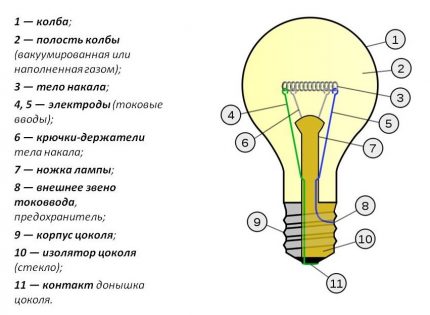
The main acting element is the so-called glow body, mounted on holders and attached to the electrodes. At the time of connection of electricity, voltage passes through it, causing both heating and glow.For the radiation to become visible, the heating temperature must reach 570 ° C.
Tungsten is recognized as the most resistant to high temperature metal. It begins to melt when heated to 3422 ° C. In order to maximize the radiation area, but to reduce the volume of the glow body inside the glass bulb, it is twisted into a spiral.
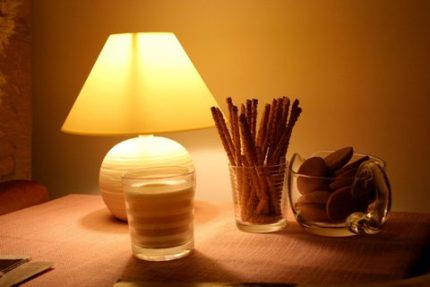
To protect tungsten from the oxidation process characteristic of metals, air is pumped out of the flask and replaced with vacuum or gas (krypton, argon, etc.). The vacuum filling technology is outdated; for household lamps, a mixture of nitrogen and argon or krypton is most often used.
As a result of testing, the minimum duration of lamp burning was revealed - 1 thousand hours. But, taking into account the random reasons that disable devices prematurely, it is assumed that the standards apply only to 50% of the products from each batch. The operating time of the second half may be more or less - depending on the conditions of use.
Types and features of the use of LN
Qualitative characteristics and marking of tungsten bulbs are regulated GOST R 52712-2007. According to the type of flask filling, LN devices are divided into vacuum and gas-field varieties.
The former serve less because of the inevitable evaporation of the tungsten filament. In addition, tungsten vapor is deposited on the glass shell of a vacuum source, which significantly reduces the transparency and ability of the glass to transmit light. They are released with a monospiral, in the nomenclature designation they are assigned a letter AT.
In gas field devices, the disadvantages of vacuum bulbs are minimized. Gas reduces the evaporation process and prevents the deposition of tungsten on the walls of the flask. Gas-filled monospiral species are indicated by the letter G, and bulbs with a double wound spiral, i.e. bispiral, marked with a letter B. If the bispiral variety is nomenclature BC, then krypton was used in its filling.
In halogen GLN bulbs, bromine or iodine is added to the filler of the glass bulb, due to which the evaporating tungsten atoms after evaporation return again to the filament. Halogens are produced in two formats: in the form of quartz tubes with a long spiral or in the capsule version with a compact working element.
In state standards, the division into groups occurs by scope, but other characteristics are also affected. Suppose, at one level, “VL electric miniature” (LN pl) and “LN infrared mirror” (ZK - devices with concentrated light distribution, ZD - with average) - as you can see, different criteria are chosen to indicate categories.
There are groups that can be attributed to the most popular:
- general purpose;
- for vehicles;
- floodlights;
- miniature, etc.
Consider the scope and features of various categories, which in some cases may intersect.
Description of technical requirements for each of the listed categories can be found in the relevant sections of GOST. Due to the design and scope, the labeling of devices from different groups is different.
The lamp is easier to pick up if you navigate in the legend. They reflect important technical characteristics, a possible area of use, design features and manufacturing techniques.
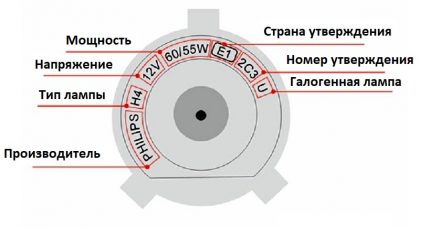
First, letters are indicated in an amount of 1 to 4, which reflect the characteristic design features. For easier decryption, the first letter of the fundamental criterion is taken as a basis, for example, G - gas-filled monospiral lamp, AT - vacuum monospiral, TO - krypton and others.
Then follows the indication of purpose:
- F - railway;
- AND - automobile;
- CM - airplane;
- Pancreas - for searchlights, etc.
The letters are numbers that indicate the technical characteristics - voltage (AT) and power (VT) Marking of lamps of a special type is different: the power is not indicated, but it is possible to determine the current, luminous flux or light intensity. If the device has two spirals, then the power for each of them is indicated separately.
The last digit may indicate the development number if the design has been modified.
Key Specifications
The most important parameter of light sources with a glowing body is the power determined in watts. The purpose of the lamps is diverse, so the range is large - from 0.1 watts of indicator "fireflies" to 23 thousand watts of searchlights for beacons.
Companies General electric and Osram produce powerful luminaires for theater and cinema productions.
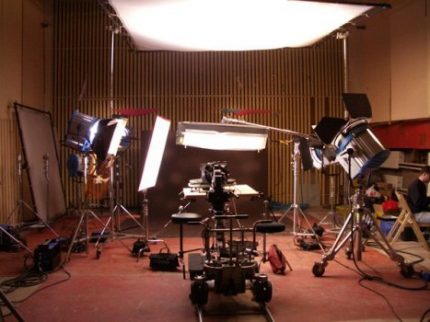
In everyday life, low-power devices are used, mainly from 15 W to 150 W, and in the industrial sphere, lamps with a power of up to 1500 W are used.
The quality of the luminous flux and the degree of dispersion are regulated by the material of manufacture of the bulb. Maximum light transmission is characteristic of transparent glass lamps, while the other two types absorb part of the light. For example, frosted glass of a flask steals 3% of a light stream, and white - 20%.
Often the power of household incandescent lamps is limited by the material of the lamps (lampshades, shades). Manufacturers of chandeliers and sconces usually indicate the recommended parameters - usually 40 watts, less often 60 watts.
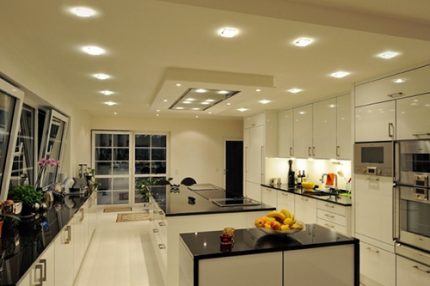
In 2011, incandescent lamps were officially recognized as low-cost and fire hazardous, so a law was passed to stop the production of 100 watts of light. Next in line is the law banning devices more powerful than 50 watts.
However, the user does not lose anything, since in the modern market a huge number of more productive and economical led bulbs and other analogues.

Today, many abandon the outdated type of lamps due to the high energy consumption and short life. However, there are categories of people who prefer to buy cheap and inefficient sources - thanks to them, the production of incandescent bulbs continues.
The second important indicator that must be taken into account when buying is cap type incandescent lamps, determined by size. Imported and domestic LED lamps have many varieties of socles, while simple lamps are limited to three.
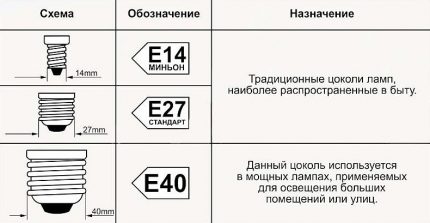
Now manufacturers are obliged to pack each product in a separate box, so that technical specifications can be found on it. Usually they indicate power, energy efficiency class (low - E), cap type, bulb transparency, service life in hours.
Advantages and disadvantages of incandescent lamps
The consumer continues to purchase uneconomical bulbs due to a number of advantages, although some of them are very conditional.
According to reviews, they are chosen because of the following qualities:
- low cost;
- lack of ballast equipment;
- instant ignition after switching on;
- familiar "home" light;
- lack of harmful substances;
- no reaction to low temperature and electromagnetic pulses.
However, few people evaluate the quality of the light flux or ripple; nevertheless, for the majority, the first factor is decisive.
But the disadvantages are much more significant, since among them are relatively low light output, limited service life, a small range of color temperature (only yellow light), dependence on voltage drops in the network, and fire hazard.
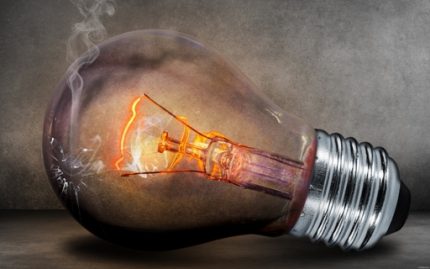
Now it is possible to compare in practice the operation of incandescent lamps, gas-discharge and LED analogues. Everyone who has noticed a difference in energy consumption has long switched to energy saving devices.
Light bulb recommendations
When buying light bulbs are oriented primarily on the size of the cap and power. These two parameters can easily be determined by the old, burnt out light source.
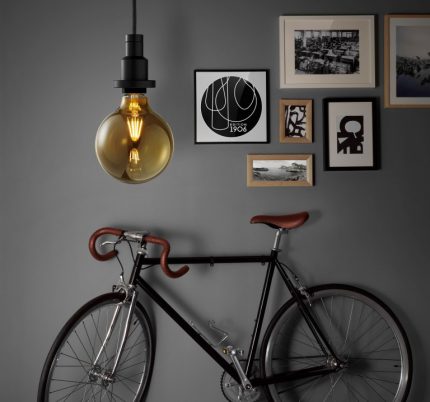
If you choose a device with a lower power, the luminous flux will be weaker, if more, then you risk the integrity of the shades - they can be deformed due to the high heating temperature.
In addition to the technical characteristics, it is worth paying attention to the quality of the lamp. Preference should be given to products with a wide socle contact, a soldered current lead, stably fixed by a filament.
Conclusions and useful video on the topic
Even more informative and interesting information about the production, use and shortcomings of incandescent lamps is in the videos shot by experts and amateurs.
Interesting facts about incandescent lamps:
How does the production of drugs take place:
Comparative review of lamps of different types:
Popular about choosing lamps for the home:
The consumer himself has the right to choose a light bulb for use in everyday life. However, do not chase the cheapness and deceptive benefits.
Given that we use lighting all the time, and there are usually more than a dozen bulbs in a house, habits should be reviewed. Many users have long switched to more reliable, economical, safer LED lamps..
Have you noticed errors or inaccuracies in the material? Or want to supplement this article with helpful suggestions? Please write to us about this in the comments section.
If you prefer to use traditional light bulbs instead of more economical energy-saving ones and want to share your opinion on them, write your point of view on the advisability of using ordinary light bulbs under this article.

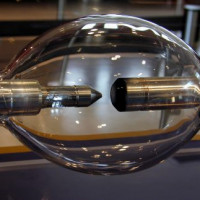 Gas discharge lamps: types, device, how to choose the best
Gas discharge lamps: types, device, how to choose the best 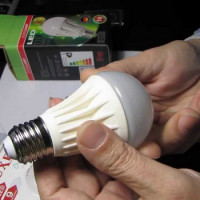 Which LED lamps are better to choose: types, characteristics, choice + best models
Which LED lamps are better to choose: types, characteristics, choice + best models 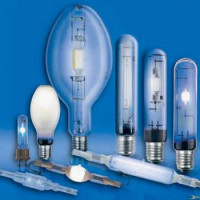 Mercury lamps: types, characteristics + an overview of the best models of mercury-containing lamps
Mercury lamps: types, characteristics + an overview of the best models of mercury-containing lamps 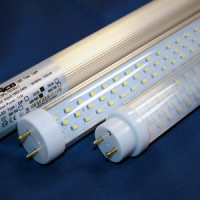 Linear LED lamps: characteristics, types + nuances of the installation of linear lamps
Linear LED lamps: characteristics, types + nuances of the installation of linear lamps 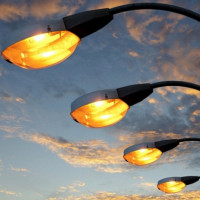 DRL lamps: device, characteristics, selection rules
DRL lamps: device, characteristics, selection rules 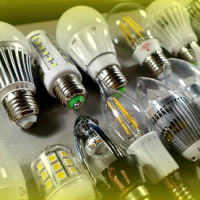 LED lamp bases: types, marking, technical parameters + how to choose the right one
LED lamp bases: types, marking, technical parameters + how to choose the right one  How much does it cost to connect gas to a private house: the price of organizing gas supply
How much does it cost to connect gas to a private house: the price of organizing gas supply  The best washing machines with dryer: model rating and customer tips
The best washing machines with dryer: model rating and customer tips  What is the color temperature of light and the nuances of choosing the temperature of the lamps to suit your needs
What is the color temperature of light and the nuances of choosing the temperature of the lamps to suit your needs  Replacement of a geyser in an apartment: replacement paperwork + basic norms and requirements
Replacement of a geyser in an apartment: replacement paperwork + basic norms and requirements
For me, incandescent lamps, this is our past. Now everyone has switched to LED, or to fluorescent. It is understandable, such bulbs are more durable, they are economical, and they look no worse. The world does not stand still, and with it progress, it’s time to get used to the new. By the way, and the usual yellow color, if desired, can also be achieved with an LED light bulb. So I see no reason to buy incandescent bulbs.
“Ilyich’s bulbs”, as they also call incandescent lamps, definitely win in terms of cost. Perhaps this is the main reason why people continue to buy and use them, despite all the campaign materials and campaigns in favor of other species. I know that lessors often hang such bulbs in apartments for rent. If anyone needs it, they will change it themselves))) It makes sense to screw such bulbs where you rarely go and, therefore, rarely use light.For example, in some kind of basement, if you appear there every six months - is it worth spending money on a super-economical LED, if electricity is practically not consumed anyway?
But such bulbs have a huge minus: when they burn out, they not only emit a loud pop, but sometimes they explode. Several times I had the pleasure of turning the light on. Each time he was baptized and rejoiced that at that moment he was not under the chandelier. Really dangerous situation. Then you are still looking for fragments throughout the room.
In the marking of incandescent lamps from our different companies there is some kind - IV05 ... IV18 resistance or what? (210 and 300W) What is it?
A relic of the past. Especially for home use. Maybe somewhere in professional areas they are also used, but in general it is impractical.